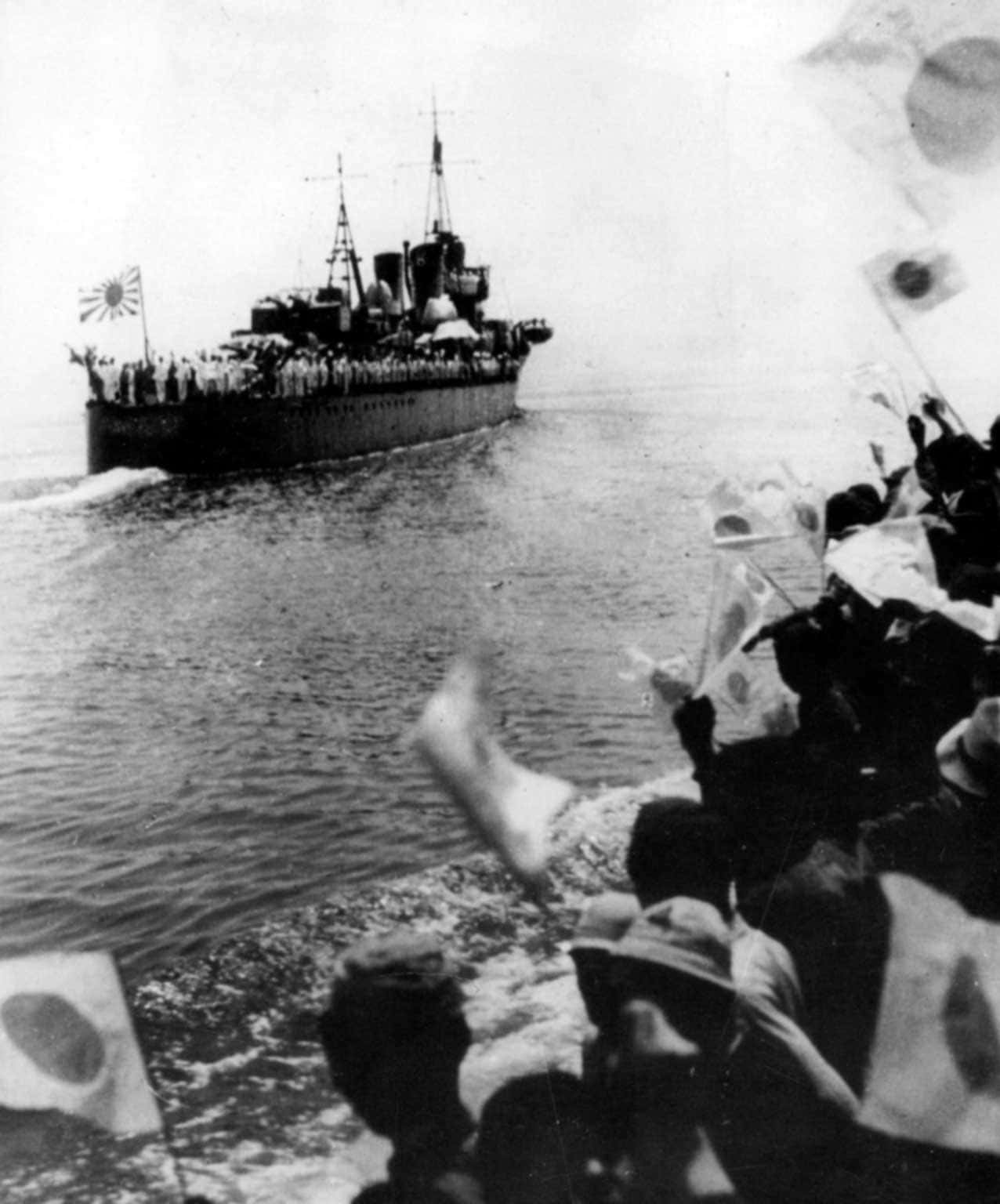Japanese civilians wave national flags as the Imperial Navy destroyer “Hamakaze” passes by while aboard another vessel. Pacific Theater of Combat Operations, World War II.
The Hamakaze photo source: Kure Maritime Museum, Japanese Naval Warship Photo Album: Destroyers, edited by Kazushige Todaka, p. 101.
Location: Pacific Ocean
Time when the photo was taken: June 1941
Author: Shizuo Fukui 福井静夫
Imperial Navy destroyer Hamakaze
The “Hamakaze” (Japanese: 浜風 Onshore Wind) is a Japanese Kagero-class destroyer. In military historical literature, the spelling Hamakaze is common. The thirteenth of 19 Kagero-class destroyers built in 1937-1941 at Japanese shipyards for the Imperial Japanese Navy as part of the Third Naval Expansion Program. (Maru San Keikaku).
Construction of Hamakaze began in 1940, launched on November 25, 1940, and entered service on June 30, 1941.
During the attack on Pearl Harbor, Hamakaze was assigned to the 17th Destroyer Division of the 1st Fleet and accompanied Admiral Nagumo’s strike force. At the end of the operation, he arrived at the Kure base (English)Russian..
In January 1942, it escorted Japanese aircraft carriers from Japan to the Truk Islands, and later accompanied them during attacks on Rabaul and Kavieng. On January 27, the destroyer returned to Truk. At the beginning of February 1942, Hamakaze took part in the pursuit of US aircraft carriers, after which it went to Palau. On February 19 she accompanied aircraft carriers during the bombing of Darwin, and on February 25, 1942 she took part in operations south of Java. On March 5, 1942, Hamakaze escorted aircraft carriers carrying out air strikes on Cilacapu (Java). On March 7, 1942, he escorted the battlecruisers Kongo and Haruna during the bombardment of Russian Christmas Island. At the end of March, the destroyer was assigned to accompany aircraft carriers for an upcoming raid in the Indian Ocean. In April 1942, it took part in air strikes on Colombo and Trincomalee. On April 10, 1942, the Japanese 17th Destroyer Division was included in the 10th Destroyer Squadron of the 1st Air Fleet. On April 27, 1942, the destroyer arrived at the Kure Arsenal for repairs.
